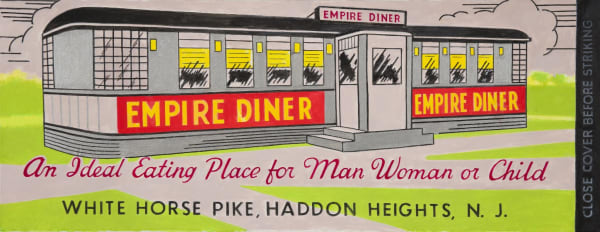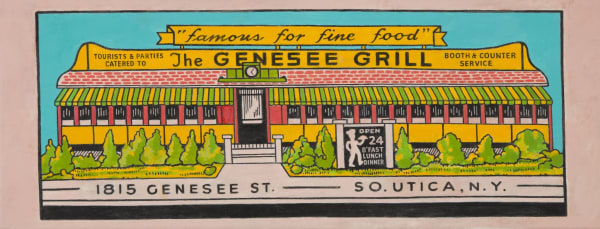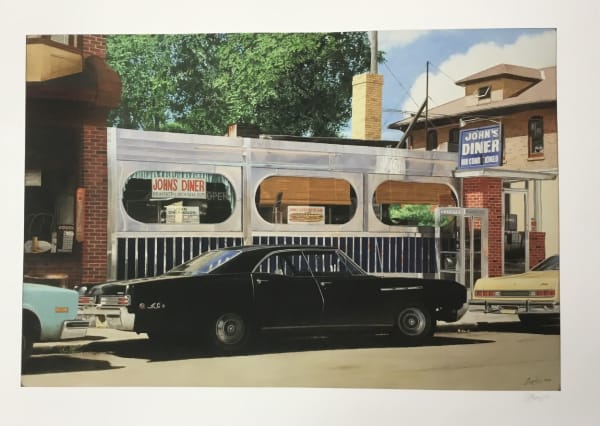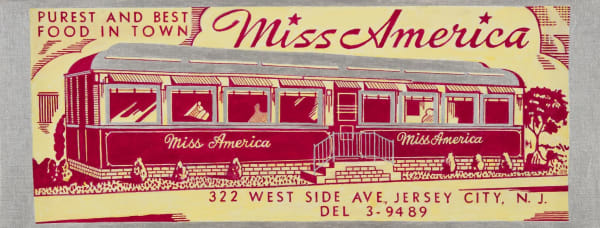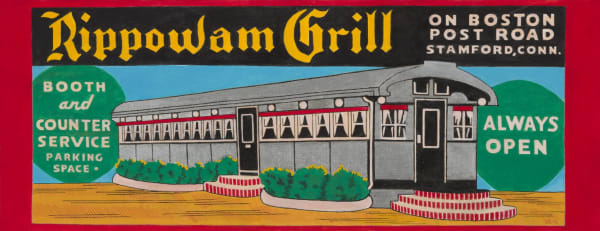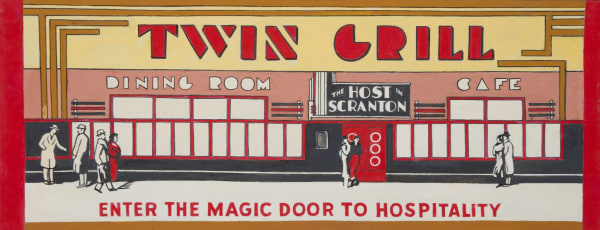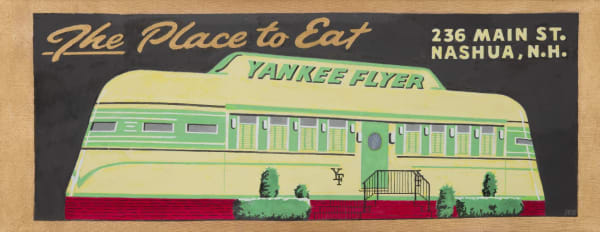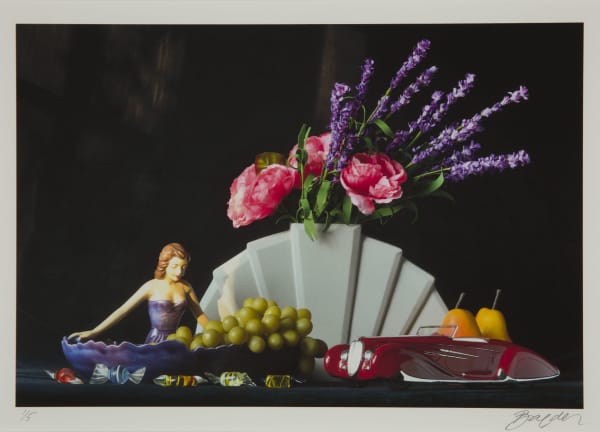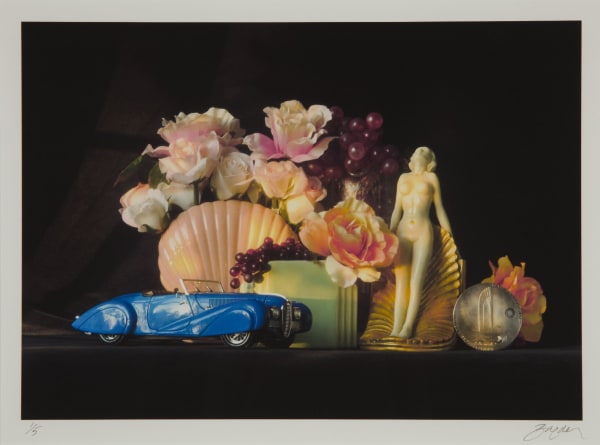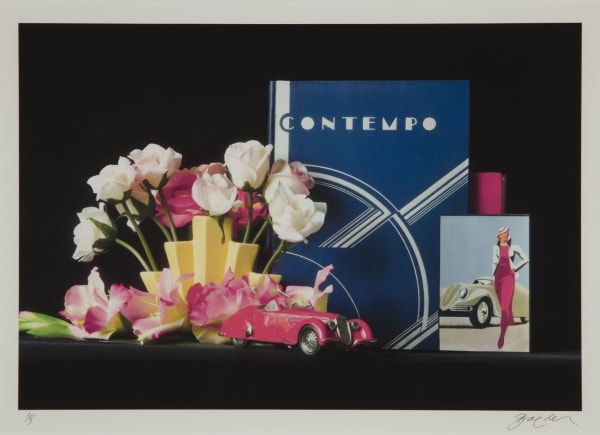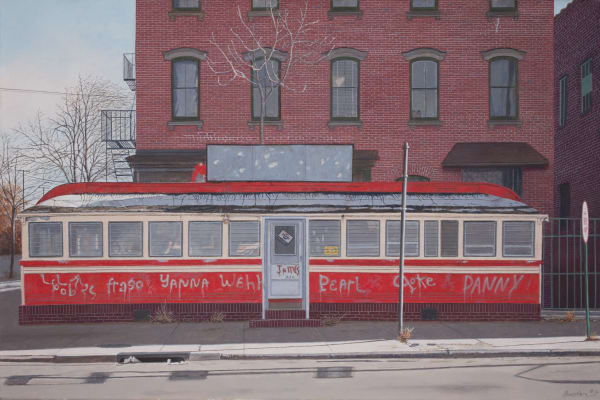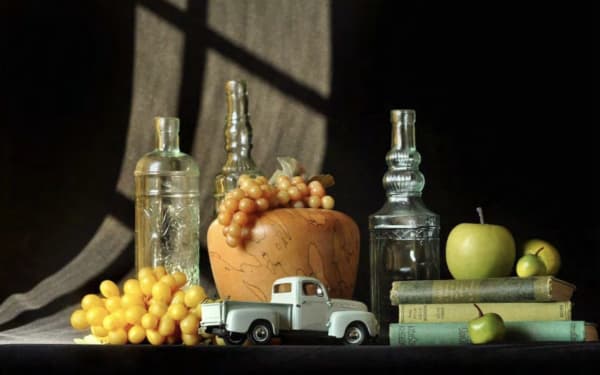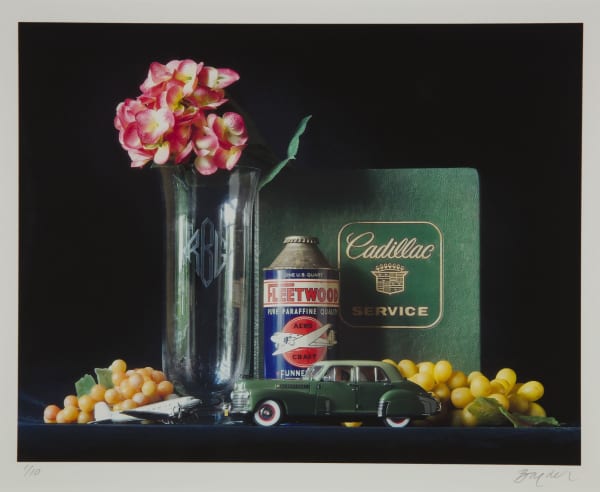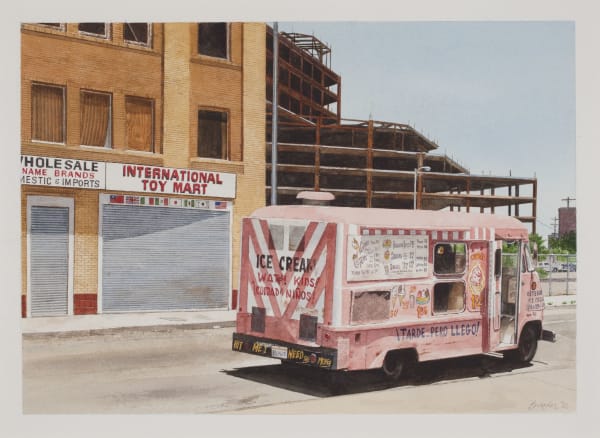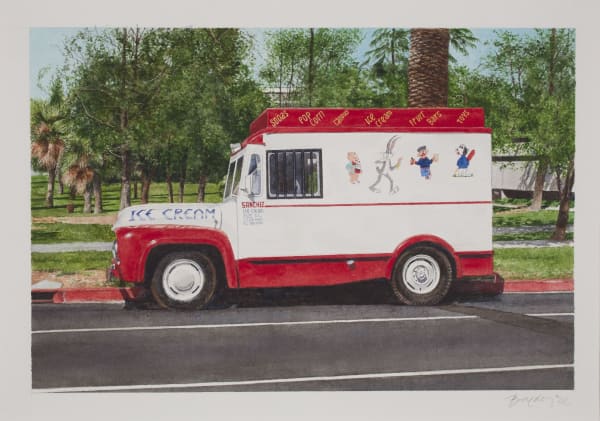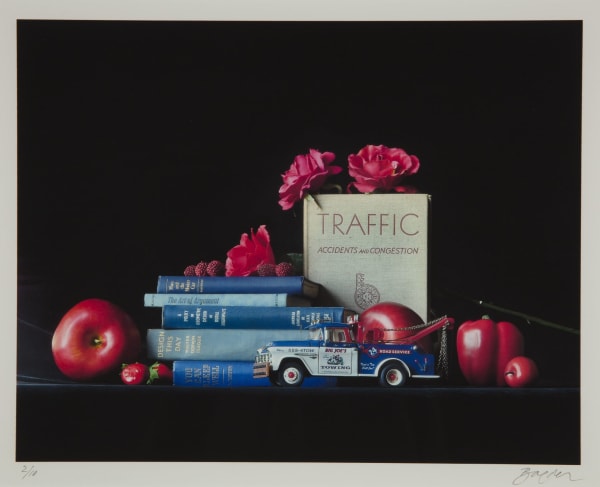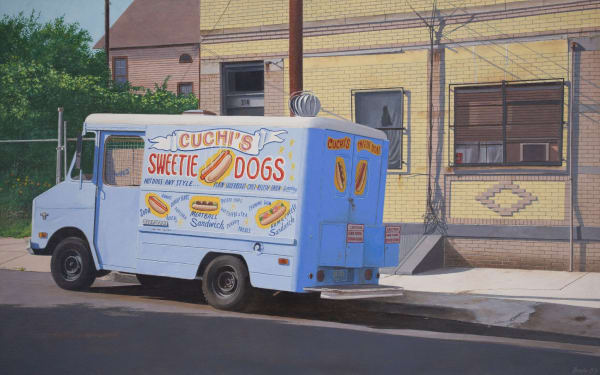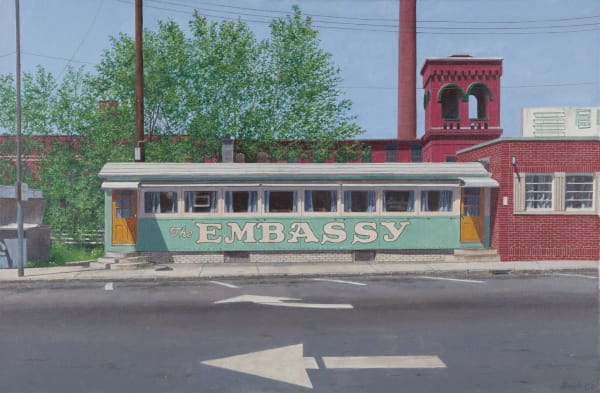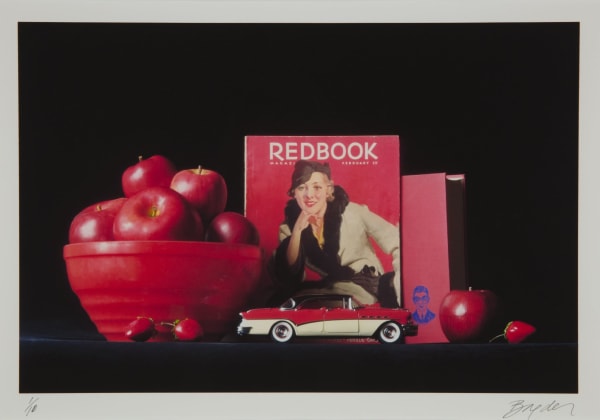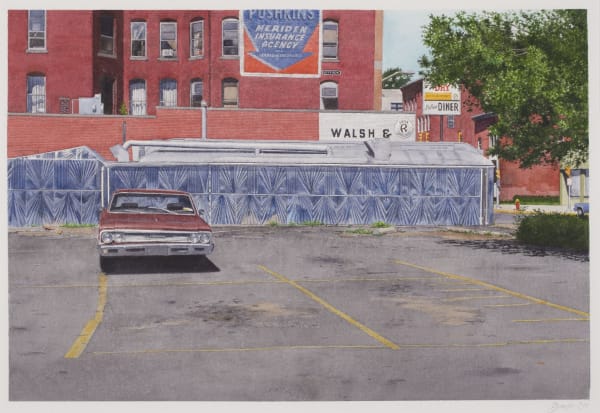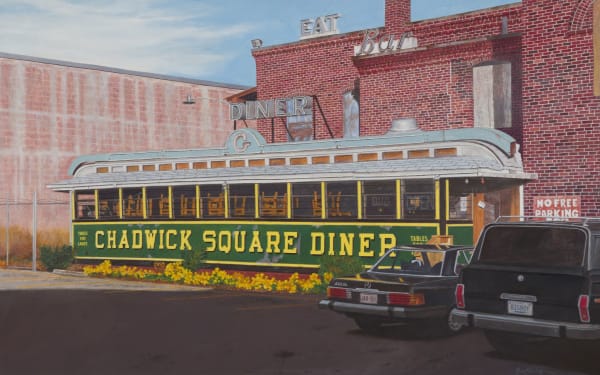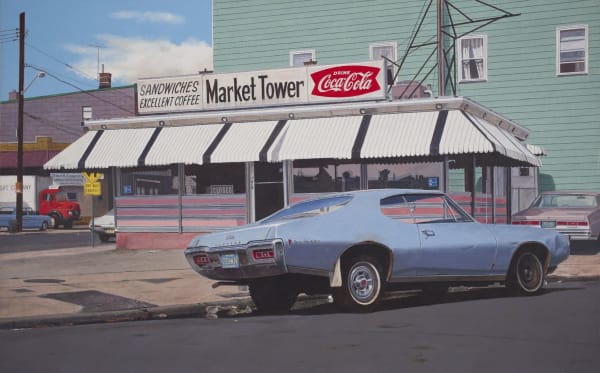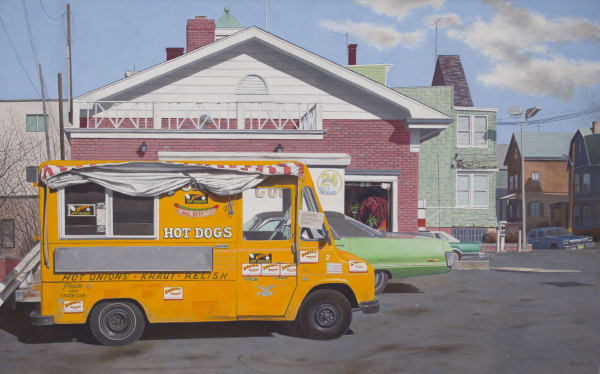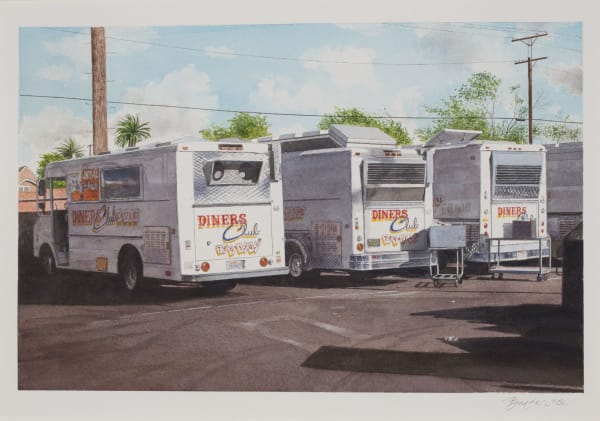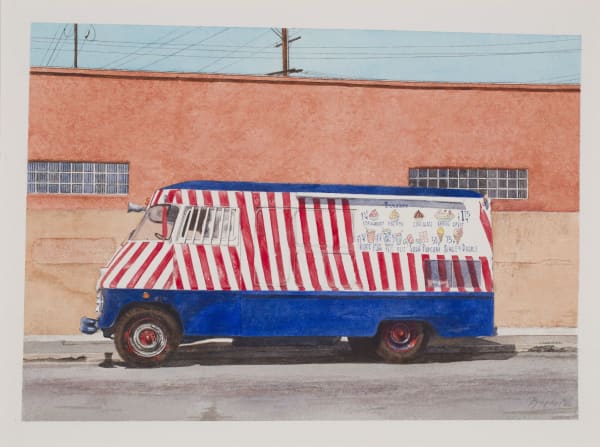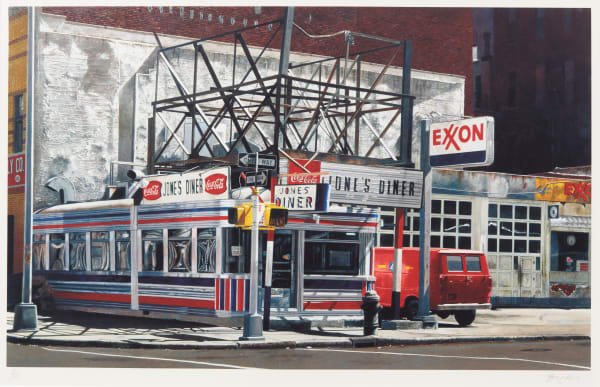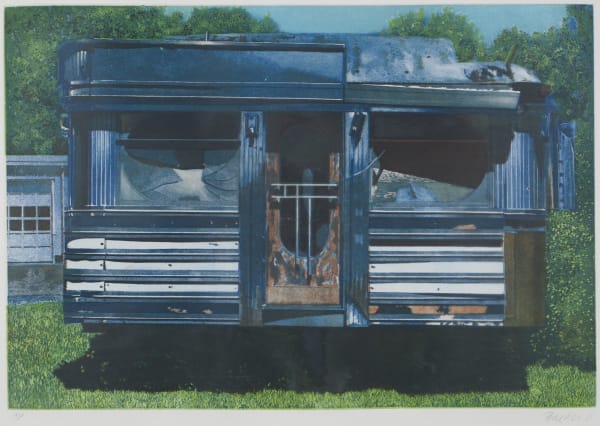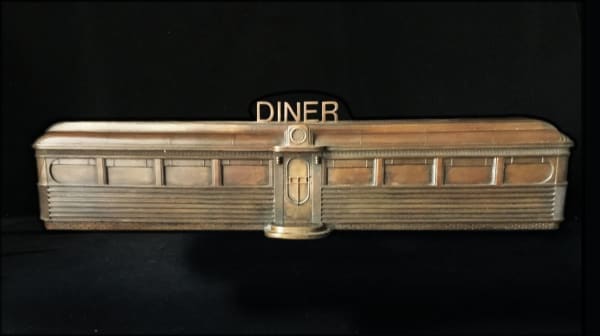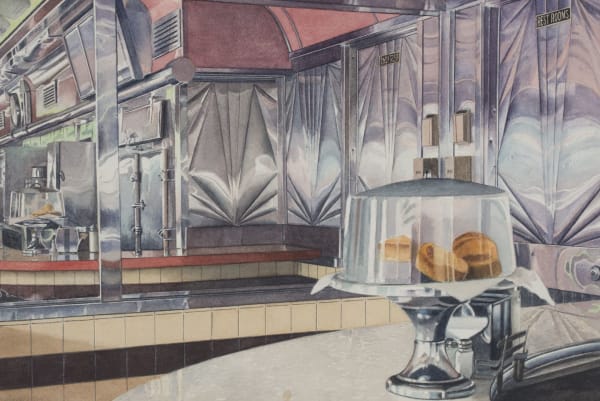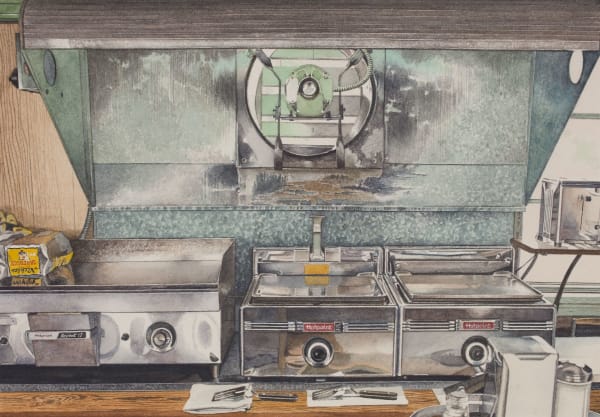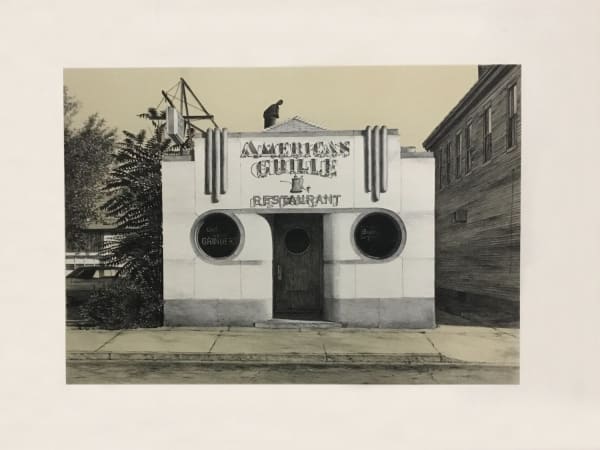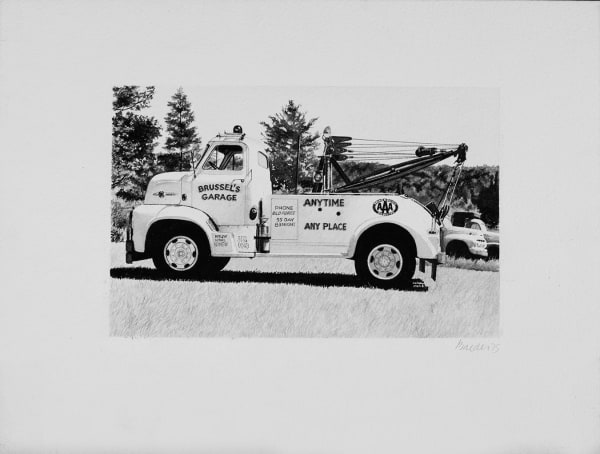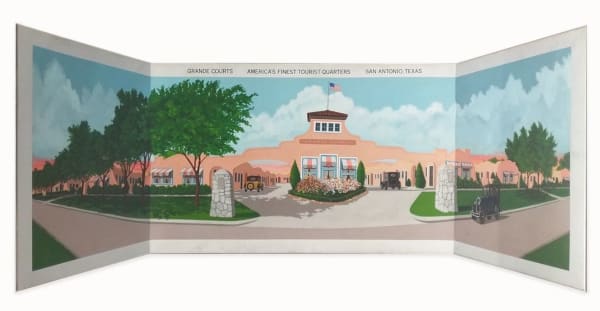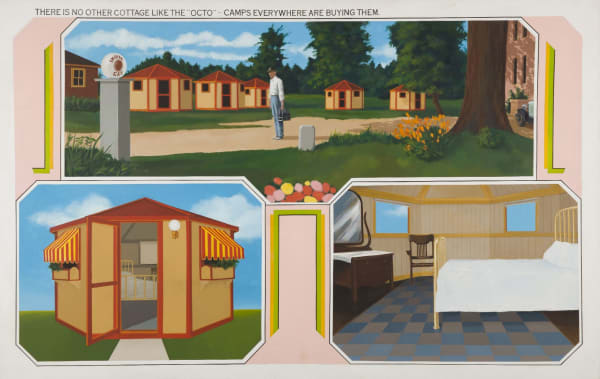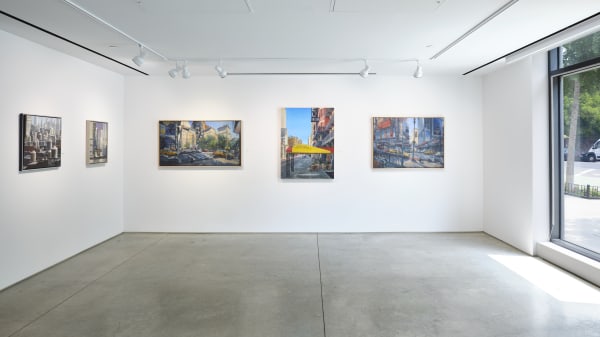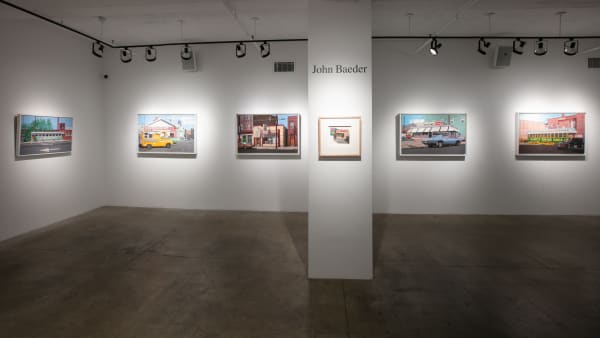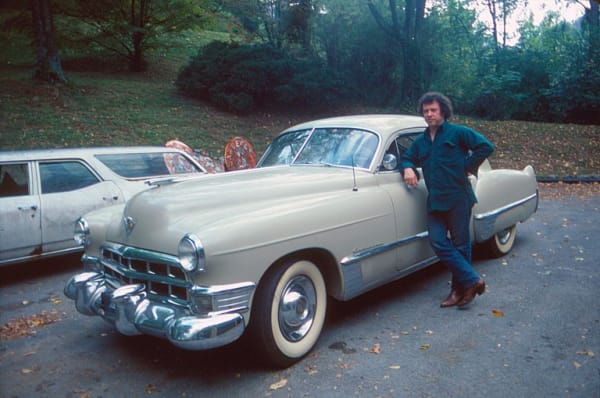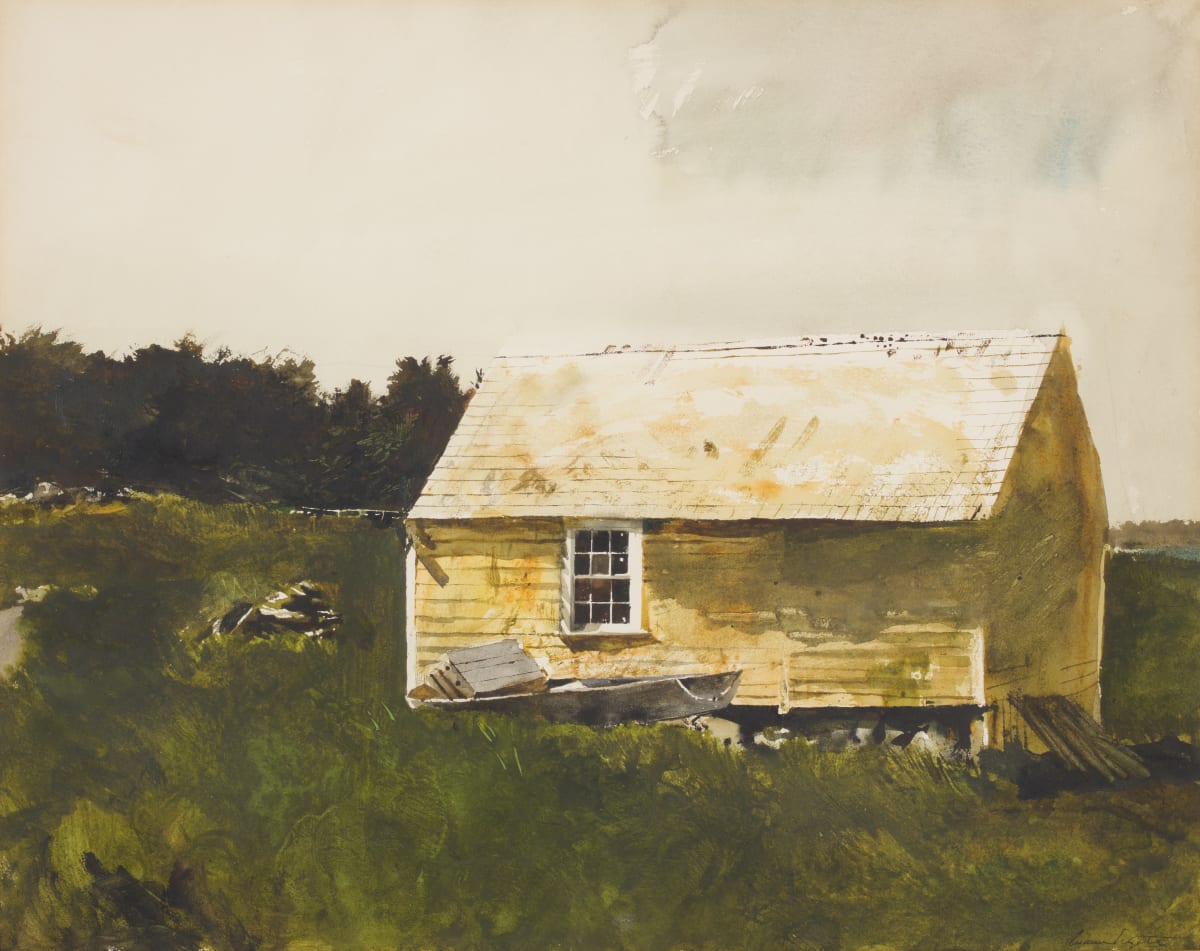John Baeder
Baeder was born in South Bend, Indiana on December 24, 1938. His family moved to Atlanta, GA when he was a year and a half. While quick to make friends in Atlanta, Baeder had interests quite different than his classmates, and often at odds with his practical parents. At age twelve, he became fascinated with collecting. But instead of the baseball and sports cards that intrigued some of his peers, Baeder was drawn to aircraft. He spent hours scouring magazines devoted to airplanes, absorbed in the mechanical and sculptural details of these flying machines.
Traveling by train as a young boy to visit his mother's family in South Bend, Indiana, Baeder would stare out of the windows at the passing landscapes. Later he would remember these views as pictures, framed by the window's edges. He loved the trains’ diner cars, a center of activity and hospitality, exotic to his child’s eyes. These memories, and others, would later be reflected in his works as an artist.
At a time and a place when his contemporaries were aspiring to more traditional careers, Baeder had recognized a different path for himself. By age fifteen, he was attending live drawing classes at the then small High Museum in Atlanta. At sixteen, Baeder expressed a desire to his parents to attend the Royal College of Art in London. This destination was outside the family means or understanding, but at seventeen Baeder found a local alternative: the art department at Auburn University which had acquired a reputation for its progressive approach.
Traveling between Georgia and Alabama had a profound effect on Baeder. There was no interstate at the time, and driving along Highway 29 and the rural backroads, Baeder was exposed to roadside culture, which he saw as embodying something uniquely American, and for which he developed a lifelong passion.
In Collaboration with mbabram.com
-

Summer in the City
Jun 7 - Aug 1, 2025'Summer in the City' opens June 7 at ACA Galleries, and it’s a love letter to New York in all its maddening, magnificent glory. The show spans a century of artists obsessed with the city—not just the skyline, but the hum of the streets, the geometry of the fire escapes, the poetry of pigeons, the solitude in a crowd.Read more -

John Baeder
Looking Back 1972-2018 Nov 5, 2022 - Feb 18, 2023Read more
-

John Baeder
Looking Back (1972 – 2018) at ACA Galleries Jan 4, 2023ACA Galleries and MB Abram are currently showing John Baeder’s first exhibition at the gallery through February 18th, 2023. The event began on November 4th, 2022. Comprising five decades of work from 1972 – 2018 the show includes the last remaining paintings from the artist’s personal collection alongside his final series of Matchbook Cover paintings as well as his luminous still life photographs.Read more -

Looking Back
American Art Collector Jan 3, 2023New York’s ACA Galleries hosts a retrospective of photorealist painter John Baeder Unlike other masters of photorealism for whom technique and surface are often paramount, John Baeder revels in his subjects—diners, mostly, and in his photographic still lifes, objects with deep personal meaning. M.B. Abram, who represents Baeder and is collaborating with ACA Galleries in an ongoing retrospective of the artist’s work, writes, “Many of Baeder’s photorealist peers were preoccupied with shiny surfaces, reflections in store windows, forced perspective, and showy composition. Of the hyperrealists of the early ‘70’s, only Baeder embraced imagery that could be appreciated by everyday people and simultaneously, could be interpreted in terms of human values and archetypal relationships.”Read more -

ARTS/ARTIFACTS; A Fading Language Of the Roadway,
The New York Times, Rita Reiff Oct 29, 2022IN 1962, WHEN HE WAS AN art director at an advertising agency in Atlanta, John Baeder began photographing quirky signs he saw scribbled on walls, doors, roofs or Dumpsters around the city.Read more -

Why Does John Baeder Paint Diners?
Design Observer, Steven Heller Nov 3, 2009John Baeder paints diners. His goal for the past three decades has been to record on canvas and paper just about every diner, roadside eatery, and virtually every possible monument of American consumer culture.Read more


